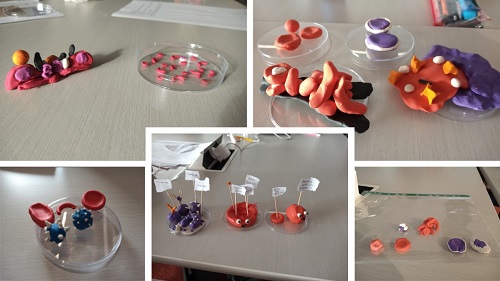Active Learning in Action: Blood Physiology Workshop Sparks Creativity
Published: 7 November 2024
Dr Katherine Price lead a hands-on workshop with the Level 3 Human Biology and Physiology students on the topic of blood.
 As part of our course’s commitment to promoting active learning, Level 3 Human Biology and Physiology students recently participated in an interactive workshop on the topic of blood, led by Dr Katherine Price. This hands-on session combined theoretical knowledge with practical challenges in a way that brought physiology concepts to life.
As part of our course’s commitment to promoting active learning, Level 3 Human Biology and Physiology students recently participated in an interactive workshop on the topic of blood, led by Dr Katherine Price. This hands-on session combined theoretical knowledge with practical challenges in a way that brought physiology concepts to life.
The workshop began with an overview of general blood physiology, followed by a series of challenges. Students then worked through case studies focused on analysing a range of haematological disorders. They then put their understanding to the test by building plasticine models, showcasing the underlying pathology. At the same time, they answered a problem-solving question designed to assess their understanding and encourage creative thinking.
Using modelling as a learning tool provides students with an opportunity to engage more deeply with complex material. This approach has also been effectively used by Dr Emma Reid, who uses plasticine models to help neuroscience students explore neuron structure. Creating physiological models encourages students to think critically about structure, function and pathophysiology, reinforcing key concepts through hands-on learning.
Katherine noted the students’ enthusiasm, with many going beyond the suggested challenges to explore additional elements of blood physiology in creative and innovative ways. This workshop also highlighted the value of interactive teaching spaces, where students can engage actively with their studies in a collaborative and stimulating environment. And with so much plasticine creativity on display, it was a reminder to always leave a little extra time for tidying away and cleaning the desks at the end!
First published: 7 November 2024
<< News

